Do you wants to learn how to draw island landscapes?
The lesson on how to draw an island is ready for you, with 10 steps to help you drawing an island with ease!
By the end, you’ll have all the knowledge you need to create a beautiful and realistic island scene.
How to Draw an Island – A Step by Step Guide
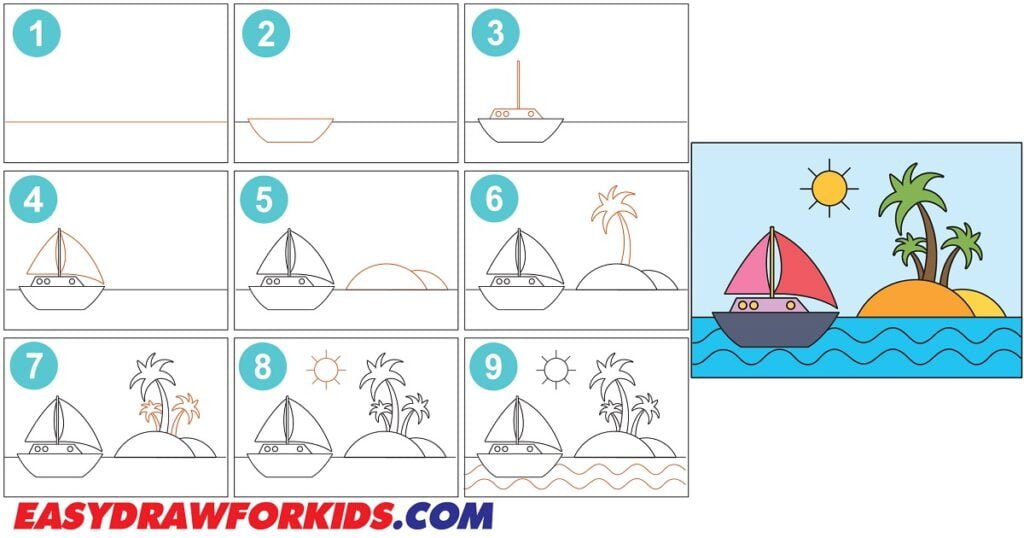
Step 1: The first step in this guide how to draw an island by drawing a horizontal line across your page for the horizon.

Step 2: Use straight horizontal and oblique lines to draw the main of the ship as shown the picture.
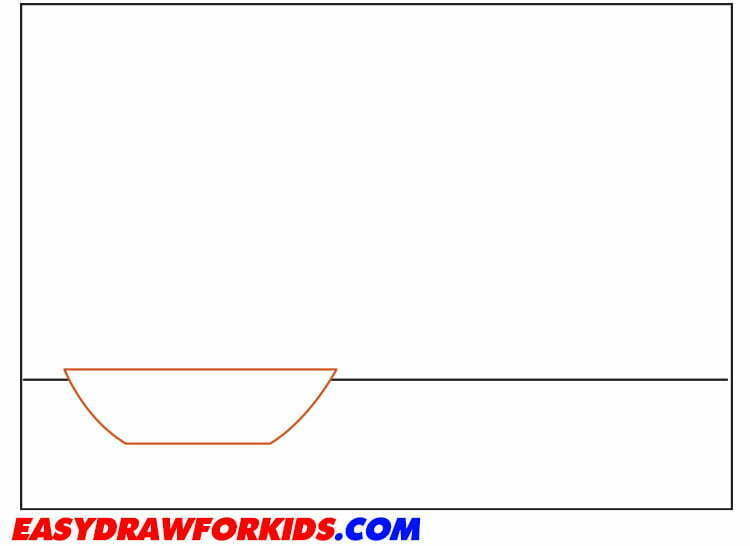
Step 3 Depict the Mast and Top of the Ship
Add a small rectangular shape at the back of the ship for the cabin .
Above the previously drawn detail, draw two obliques and one horizontal straight line, then draw three small circle for the window
Draw two straight vertical lines and connect their ends at the top.
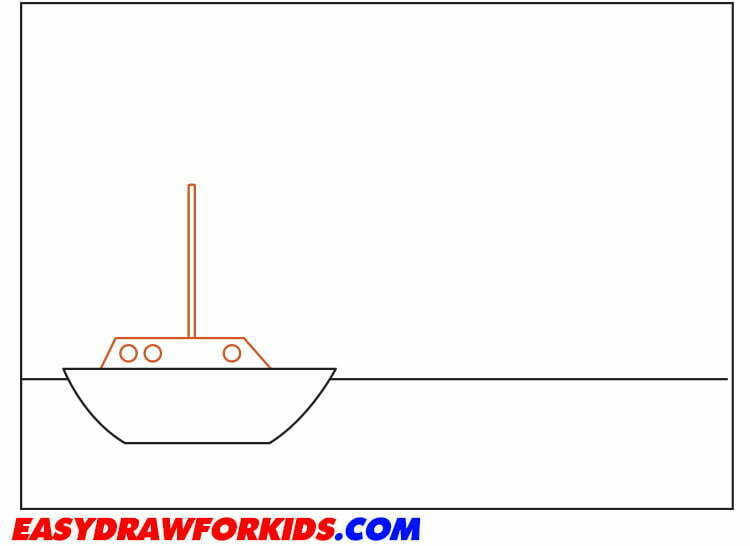
Step 4: Draw two inclined straight lines, as well as one arc on the sides of the mast for the sail
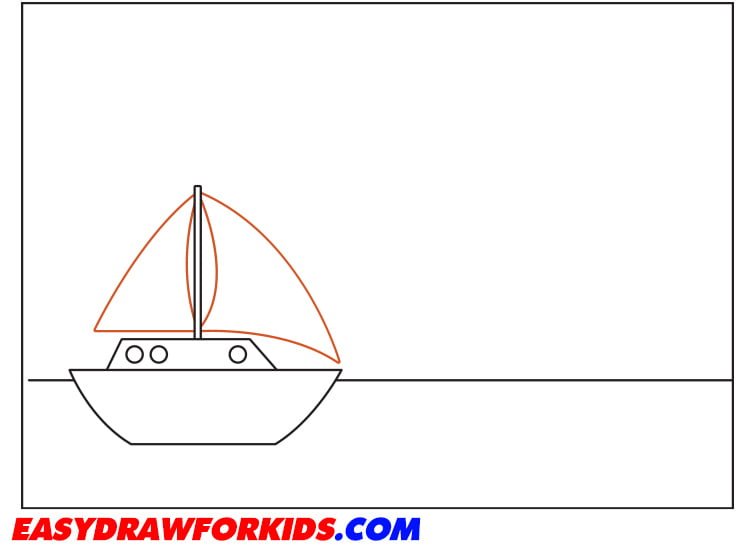
Step 5: Begin your island drawing by draw two half-circle overlapping as you can see in the reference image
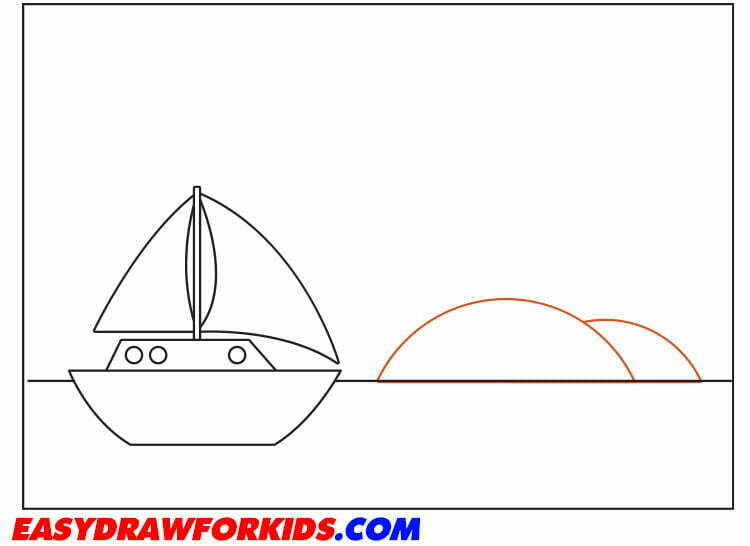
Step 6: At the top of the island, draw the palm tree as shown the picture of you can reference How To Draw A Palm Tree
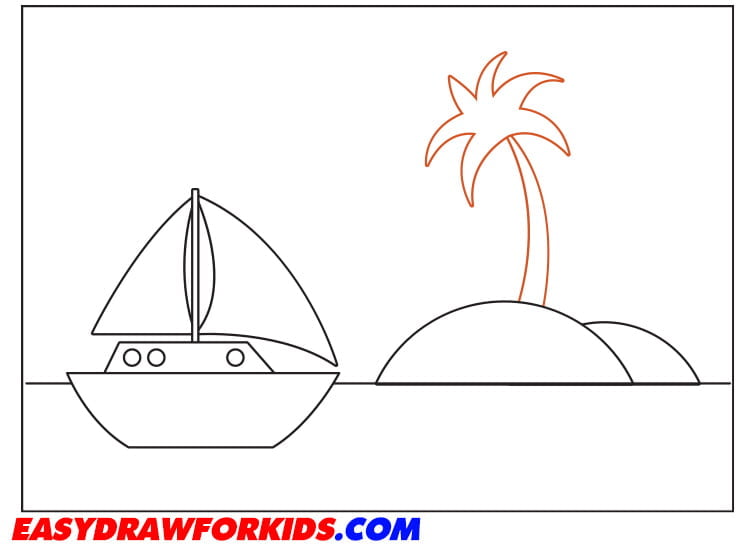
Step 7: Draw two small palm trees on the sides of the previously drawn detail
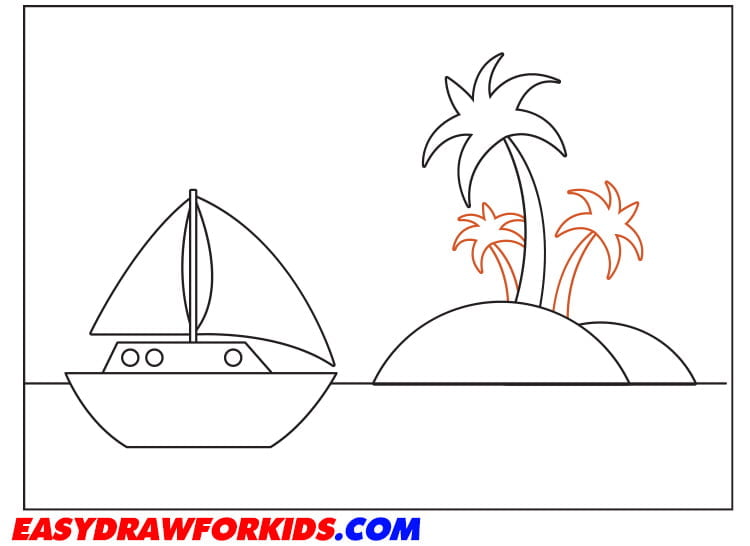
Step 8: Draw a circle for the sun and straight lines of the same length for the sun rays.
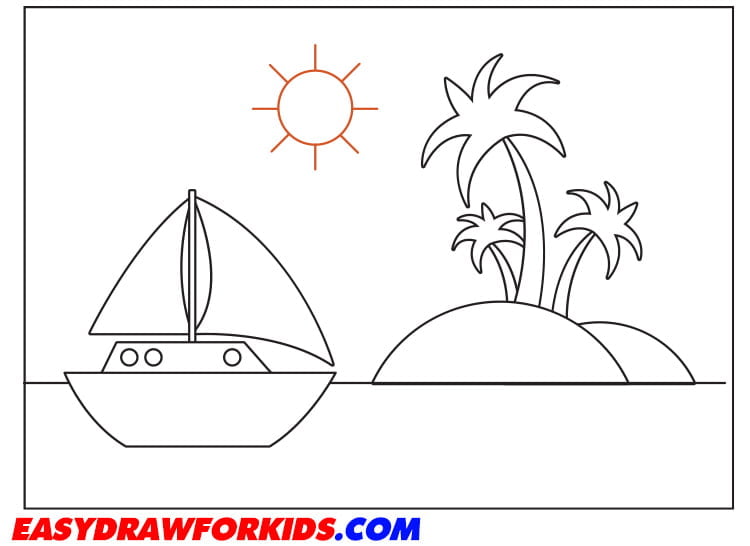
Step 9: Depict the Waves
Draw small waves radiating out from the island using curved parallel lines.
You can draw shadows on the water cast by the island for added realism.
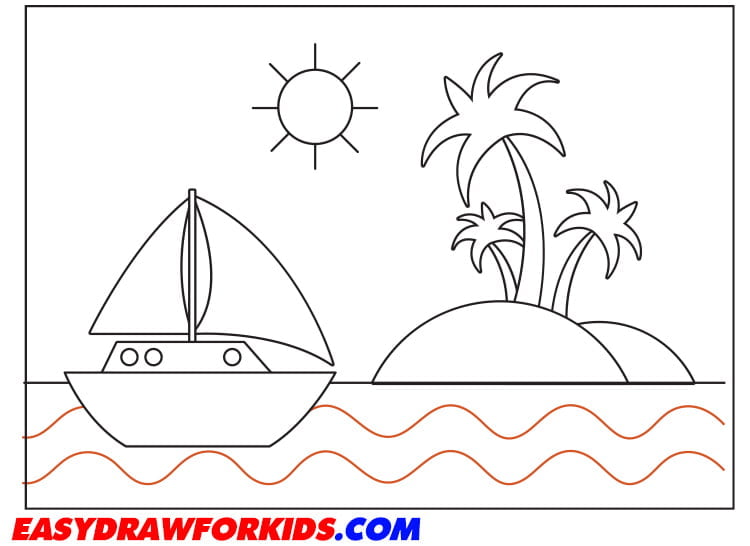
Step 10: Adding Color to Your Drawing
Now, you successfully this guide how to draw an island, it’s time to bring your art to life with color!
You can use bright greens and blues for the vegetation and water.
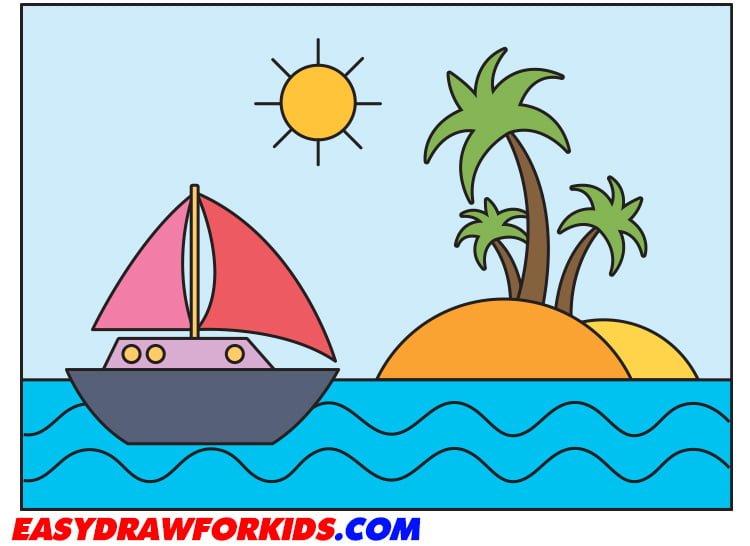
Drawing islands, you must have techniques like perspective, scale, texture and observe small details.
Just remember the fundamentals, you can draw a unique island in no time!






Leave a Reply